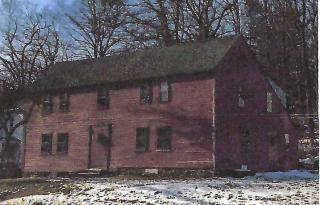Mission & Vision for Bullard House

Mission
To interpret the history of Berlin, its people and its institutions through a local history museum, in a historic setting, that tells the stories of over 200 years of community life and to continue this historic narrative into the future.
Vision
The Bullard House Museum will be a center for activities and engagement with the history of Berlin, its people and families, community organizations and churches, industrial activities, social life, architecture and artistic pursuits. Exhibits utilizing items from the Town Historical Collection will be used in conjunction with programs and interactive activities to engage visitors of all ages.
The house itself interprets local history through its use as a tavern, inn and store at the turn of the 19th Century, the blacksmith’s house from 1813-1851, the post office in the 1880’s, housing the town firetruck in the 1920’s and commercial activities in the early 20th century. Military connections include being the family home of two Gold Star brothers in World War I and a room’s use as the American Legion Hall after World War I.
The Bullard House will be the anchor of historical interpretation in the Town. The adjacent historic 1870 Town Hall can accommodate historical exhibits and programs requiring larger spaces. The 1805 Hearse House in the nearby Old Burying Ground and the Powder House of 1814 will also be useful for interpretation. The museum program will utilize all of the sites working together in our historic Center Village.
The historic building (with two levels on the first floor), and its site (on a rocky hillside) presents significant difficulties to full accessibility. The two levels on the first floor have been addressed with a code-compliant ramp, and an accessible entrance door has been installed. Accessible parking and a route to the entrance will be provided. The first floor of the Bullard House will be made as accessible as possible without substantial or destructive modification to meaningful historic elements. Exhibits and presentations will occur in accessible spaces. An accessible restroom will be provided for staff and visitors. Public use of the second floor will be determined based on a waiver process through the Massachusetts Architectural Access Board (MAAB), or through the future installation of a lift, should a suitable location be determined and planned.
The Berlin Art and Historical Society, a 501C3 organization, has provided both financial support and a volunteer base for Bullard House events and projects. Members’ support will be encouraged and enhanced by small programs and workshops that promote interest in and appreciation for the many and varied uses of the Bullard House. Public attendance will be encouraged and will increase awareness and participation to implement the Museum’s vision.
Community Preservation Act funding has been secured in the amount of $200,000.00 for structural rehabilitation and architectural services and will continue to be an annual source of funding for historic preservation. This funding provides leverage for a Massachusetts Historical Commission (MHC) MPPF grant which, if awarded, will provide matching funds.
Networking with the Central Mass Regional Planning Commission (CMRPC), the MHC, and preservation consulting firms is planned to help us accomplish our preservation goals.
Staffing will evolve with the Bullard House itself, beginning with volunteers, leading perhaps to a paid position, starting with posted hours and special events and then transitioning over time to more frequent regular hours. Visitors will be welcomed by staff members, who will maintain the museum, lead activities and discussions, help set up exhibits, teach historical skills and crafts, invite visitors to share discoveries, or just travel back to the past. A Bullard House Friends group could be formed to structure the building’s volunteer opportunities, create camaraderie and solicit input as well as build consensus for activities and projects.
Visitors will fully engage with an experience-filled environment to learn about the past and carry with them new insights as they build the future.

